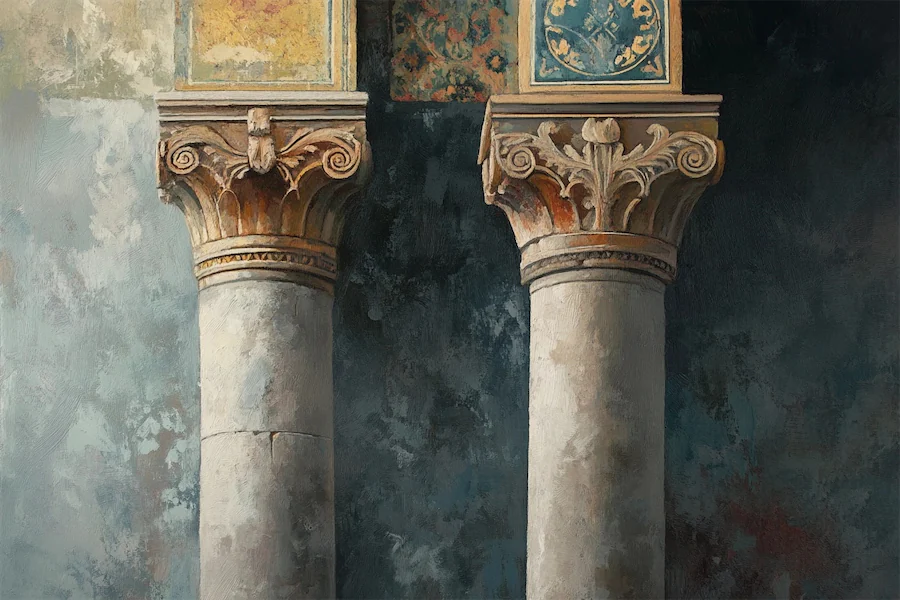Byzantine columns are a distinctive feature of Byzantine architecture, which developed during the Byzantine Empire from 330 AD to 1453 AD. This architectural style evolved from Roman and Greek traditions, incorporating unique elements that reflected the empire’s cultural and religious identity.
History and Origins of Byzantine Columns
The establishment of Constantinople (modern-day Istanbul) as the new capital by Emperor Constantine the Great in 330 AD marked the beginning of Byzantine architecture. Architects adapted classical Roman and Greek elements, such as columns, to create a style that suited the Christian liturgy and imperial grandeur. Over time, these columns became more decorative, featuring intricate carvings and symbolic motifs.
Key Features of Byzantine Columns
Byzantine columns exhibit several distinctive characteristics:
- Innovative Capitals: While early Byzantine columns drew inspiration from classical orders like Doric, Ionic, and Corinthian, they evolved to feature unique capitals. These capitals often included intricate carvings of foliage, crosses, and other Christian symbols, reflecting the empire’s religious devotion.
- Use of Marble and Stone: High-quality materials, such as marble and stone, were commonly used for columns, showcasing the empire’s wealth and commitment to creating enduring structures.
- Structural and Aesthetic Roles: Beyond their structural function, columns were integral to the aesthetic composition of Byzantine churches and public buildings, contributing to the harmonious and majestic interiors.
Applications of Byzantine Columns
Byzantine columns were prominently featured in various architectural contexts:
- Churches and Basilicas: Columns supported arches and domes, creating expansive and awe-inspiring interior spaces. The Hagia Sophia in Constantinople is a prime example, with its massive columns contributing to the building’s grandeur.
- Public Buildings and Monuments: Columns were used in forums, palaces, and commemorative monuments, symbolizing imperial authority and continuity with Roman traditions. The Column of Justinian, erected in Constantinople, exemplifies the use of columns in monumental architecture.
Considerations When Choosing Byzantine Columns
When incorporating Byzantine columns into architectural designs, consider the following:
- Historical Authenticity: Ensure that the design elements, such as capital motifs and column proportions, are consistent with authentic Byzantine styles to maintain historical integrity.
- Material Selection: Utilize materials that reflect the quality and appearance of traditional Byzantine columns, such as marble or appropriately finished stone, to achieve an authentic look.
- Craftsmanship: The intricate carvings characteristic of Byzantine capitals require skilled artisans to replicate faithfully. Engaging craftsmen experienced in traditional techniques is essential for achieving the desired level of detail.
Conclusion
Byzantine columns are emblematic of the empire’s architectural innovation and artistic expression. Their unique designs, combining structural functionality with elaborate decoration, continue to inspire and inform contemporary architectural practices, offering a timeless connection to a rich historical legacy.
